We all know that Microsoft Word wasn’t designed by editors for editors. As good a program as it is, it is a compromise. The result is that some “features” aren’t really features for editing; instead, they are time-consuming and thus cost efficient editors money.
This is certainly the case when it comes to managing comments and queries (hereafter “comments” means both) we have inserted in a manuscript, regardless of whether we inserted them using Word’s method or EditTools’ Insert Query macro. For example, to delete a comment, Word requires us to locate the comment in the text, select it, and delete it. Similarly, to modify the text of a comment, we need to locate the comment and open it. I have had instances where a comment I inserted on page 3 of a document needed to be changed because of information on page 19. To edit the page 3 comment, I had to leave page 19, not my preference when the only reason to do so is to be able to edit the comment. But that is the Microsoft way.
EditTools’ Comment Editor changes the way I deal with comments and has reduced the time I spend “managing” comments — which, in my editing world, means more profit for me.
Comment Editor is an easy-to-use method for reviewing and modifying comments created using either EditTools’ Insert Query macro (A) or Microsoft Word’s method. Comment Editor is accessed from the EditTools ribbon as shown here (B). Comment Editor can also be accessed by keyboard combination. To assign a hotkey combination, go to Hotkeys (C) and choose Set Up Hotkey for Macro and choose Comment Editor.
When a comment is inserted, Word automatically numbers it as shown here (#1):
The Comment Editor dialog
The Comment Editor dialog is shown below. It is from this dialog from which anything that can be done to a comment is done. There is no need to locate the comment in the text or go to it; wherever you currently are in your document is where you will stay unless you choose otherwise.
When you open Comment Editor, the main text area (#2) is automatically populated with every comment present in your document. As you can see, in our example, the document already has six comments. Comment Editor gives you a few options. If you use Word’s method to edit a comment, you need to go to the comment — otherwise the comment is inaccessible. That means you need to leave your present location in the document. For example, if you are at the location where comment 5 is found and realize that because of the text at that location, you need to modify comment 2, with Word’s system, you need to go to comment 2. Word also doesn’t provide a way to automatically return to where you were in the document.
Comment Editor doesn’t work that way. Instead, Comment Editor offers you the option to go to the comment or not. If you want to go to the selected comment, you can click Go to Comment (#3) — the manual way of going to an individual comment — or if you prefer to always go to the comment, you can set your default to automatically go to a comment when it is selected (#4). When you are done, you can return to where you were in the document by clicking Return to Before (#3), the manual method, or make your default that you automatically return when Comment Editor is closed (#4).
Another difference from Word’s method is that to get to a specific comment in Word, you go to the Review ribbon and click Next or Previous. In contrast, with Comment Editor, you simply choose the comment you want to go to in the text field (#2).
When you select a comment in the text field (#2), you are given several bits of information: comment ID or number, a small amount of the comment’s text, and the text you attached it to (see, e.g., #1 above). More importantly, you are also shown the complete text of the comment in the Text field (#5). This Text field (#5) is where you edit the comment. If you make a change to the text, click Update (#6) to update the comment in Word. Want to delete the comment? Click the Delete button (#6) and the comment will be deleted from your document and the comments will be renumbered.
If you want to keep Comment Editor open until you manually close it, check the box at #7. Comment Editor also displays the total number of comments in the document (#8) should you not be able to see all of them in the main field.
Inserting a new comment
Note what is currently comment 6 in the list of comments shown at #2. In the image below, Insert Query has been used to insert a new comment (arrow), which is numbered 6 by Word.
If we reopen Comment Editor, you can see that there are now seven comments listed and the comment we added above is shown as number 6 (violet highlight and arrow).
If you were to use Word’s method, you would see the new comment at the bottom of the page, as shown here. (In this image the numbers 5 and 6 correspond to comments 5 and 6 in Word’s viewing pane.)
Modifying a comment in Comment Editor
Using Comment Editor, it is easy to modify a comment. As shown in the image below, we have selected comment 6 to modify (#9) by clicking on it to select it. Its text appears in the Text field at the bottom of the Editor (#10). The text we are adding to the comment is highlighted in yellow (for illustrative purposes; the highlighting is not part of Comment Editor) (#10). Clicking Update (#11) will add the text to the comment.
Before modifying the text, you will be asked to confirm that you want to update the comment, and the comment to be updated will be identified by its ID (circled text below):
Clicking Yes results in the comment being updated as shown here:
which we can see in Comment Editor when we reopen it:
The editing of the comment took place solely within the Comment Editor. Comment Editor lets us see the complete text of all comments in the document and lets us manage the comments as needed. Time is saved because we no longer have to travel around the document to find the correct comment to edit or to do the editing.
When there are a lot of comments
Dealing with comments in a long document that has many comments can be tricky. An example is shown in the image below, which shows the comments in the chapter I was editing when I was only two-thirds through the document. At this point in time, I already had 42 comments in the document (see #12). Because I could scroll through the comments in Comment Editor, I was able to locate the comment I needed to modify and change its text without moving from my present location in the document. A much easier and faster way to manage comments, especially when there are a lot of them.
In my experience, it is not unusual for one comment to be dependent on another comment, or even on several other comments. Before Comment Editor, I had occasions when I had to go to and check several comments, modifying some of them, deleting others, which took time, especially to locate the correct comments. Comment Editor has made that process quick and easy.
Comment Editor is a much easier, quicker, and more efficient way to deal with inserted comments in Word than the method offered by Word itself. Most importantly, because it is efficient and a timesaver, using Comment Editor means enhanced profitability.
Richard Adin, An American Editor
Related An American Editor essays are:
- The Business of Editing: Correcting “Errors”
- The Business of Editing: Journals, References, & Dollars
- The Business of Editing: Making Search & Replace Efficient & Profitable
- The Business of Editing: Coding for Profit
- The Business of Editing: Using & Managing Bookmarks
- The Business of Editing: Clicking for Profit with Click List
- The Business of Editing: Keeping Reference Callouts in Number Order
____________
Looking for a Deal?
You can buy EditTools in a package with PerfectIt and Editor’s Toolkit at a special savings of $78 off the price if bought individually. To purchase the package at the special deal price, click Editor’s Toolkit Ultimate.
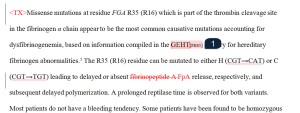


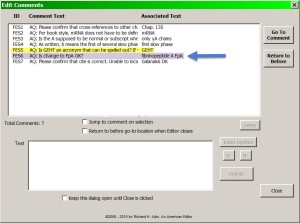
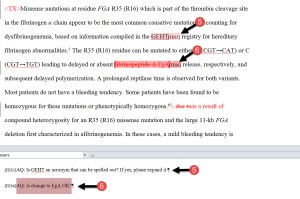

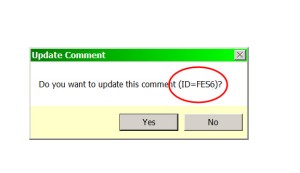
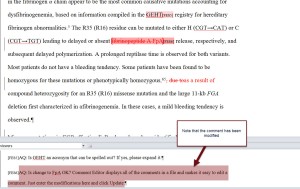
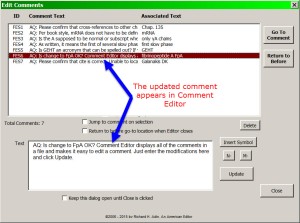


Oh, what a boon this feature is! Wish I’d had it two manuscripts ago, when I had to jump around among 300+ comments. It will definitely get a lot of use in the future.
LikeLike
Comment by Carolyn — August 5, 2015 @ 6:48 am |